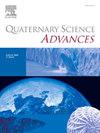Effect of heat treatment on geotechnical and microstructural properties of expansive soils
IF 2.2
Q2 GEOGRAPHY, PHYSICAL
引用次数: 0
Abstract
This paper explores the effects of heating on the geotechnical and microstructural properties of natural expansive soil found in Sendafa, Ethiopia. Expansive soils, known for their volume changes with moisture variation, pose significant challenges. Traditional methods for improving these soils include using lime, cement, and agricultural wastes. However, this study focuses on heat treatment as an alternative approach to enhance the soil geotechnical behavior. Classified as A7-6 and CH according to the AASHTO and USCS classifications, the soil samples underwent heating in a micro-oven at temperatures of 200 °C, 400 °C, 600 °C, and 800 °C for 1 h. Notably, the soil index properties showed improvement starting at 400 °C. With increased temperatures, dry density rose while optimum moisture content decreased. Furthermore, unconfined compressive strength and swelling pressure dropped as the heating temperature escalated, and the clay minerals composition was reduced due to calcination and dehydration processes. SEM analysis revealed a transformed microstructure, with the soil appearing cinder (scoria)-like, exhibiting a more flocculated, aggregated, and well-integrated layered structure. This study underscores the potential of heat treatment for stabilizing expansive soils, recommending a minimum temperature of 400 °C for effective results.
热处理对膨胀土岩土力学和微观结构特性的影响
本文探讨了加热对埃塞俄比亚森达法天然膨胀土的岩土和微观结构特性的影响。膨胀土以其体积随湿度变化而变化而闻名,这构成了重大挑战。改良这些土壤的传统方法包括使用石灰、水泥和农业废料。然而,本研究的重点是热处理作为一种替代方法来提高土壤的岩土力学行为。根据AASHTO和USCS分类,土壤样品被分类为A7-6和CH,在200°C、400°C、600°C和800°C的微烤箱中加热1小时。值得注意的是,土壤指标性质从400°C开始有所改善。随着温度的升高,干密度升高,最适含水率降低。随着加热温度的升高,无侧限抗压强度和膨胀压力下降,并且由于煅烧和脱水过程,粘土矿物成分减少。SEM分析显示土壤微观结构发生了变化,呈现出类似煤渣的形态,表现出更絮状、聚集和良好整合的层状结构。这项研究强调了热处理稳定膨胀土的潜力,建议最低温度为400°C以获得有效结果。
本文章由计算机程序翻译,如有差异,请以英文原文为准。
求助全文
约1分钟内获得全文
求助全文
来源期刊

Quaternary Science Advances
Earth and Planetary Sciences-Earth-Surface Processes
CiteScore
4.00
自引率
13.30%
发文量
16
审稿时长
61 days
 求助内容:
求助内容: 应助结果提醒方式:
应助结果提醒方式:


